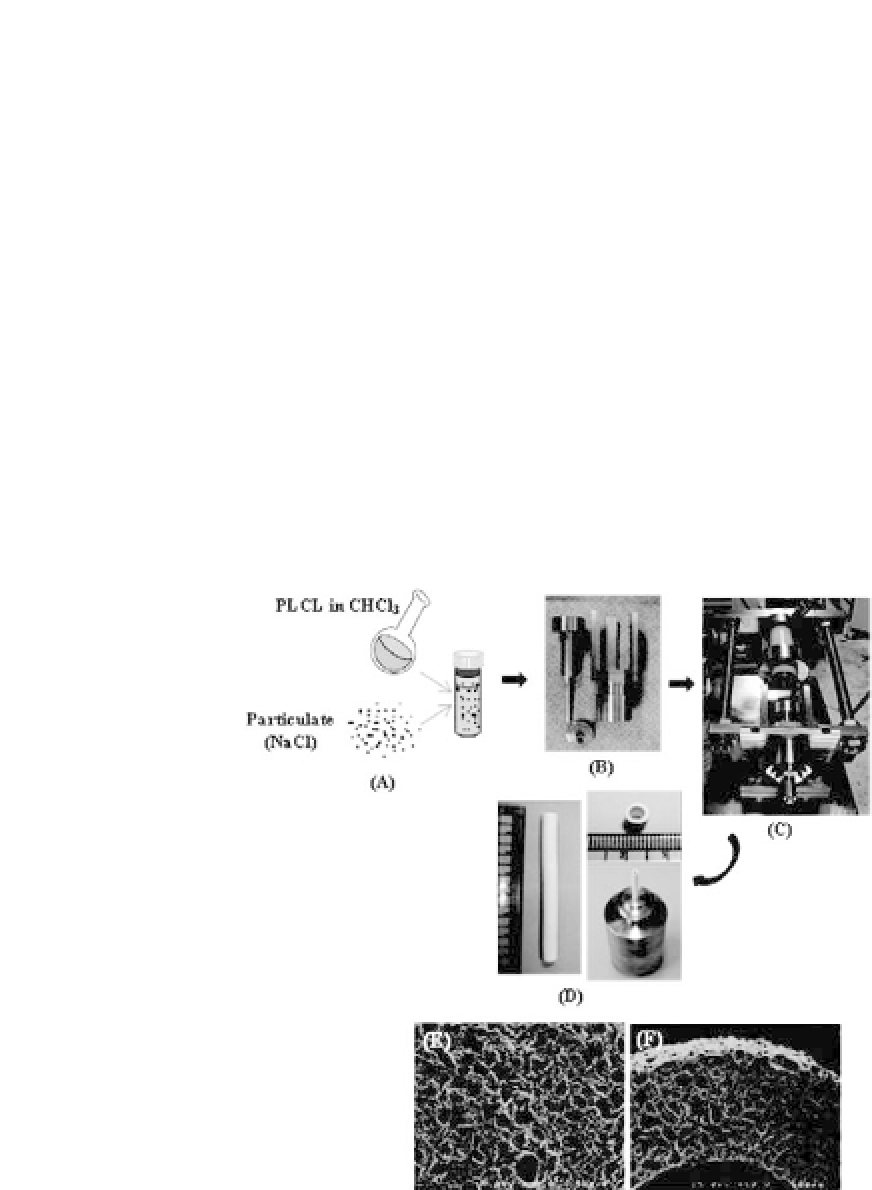Biomedical Engineering Reference
In-Depth Information
although their hydrophilicities are in opposite order. This behavior
appeared more prominently
in vivo
, probably indicating that amor-
phousregionscomposedofprimarilyCLunitsarefirsttobeattacked
by water, which can penetrate into the amorphous regions easier
thanintotheharddomainsthatarecomposedprimarilyofLAunits.
27.2.2
Tubular PLCL Scaffold
A tubular PLCL scaffold was fabricated by a particulate-
leaching/extrusion method (Fig.27.2) for vascular tissue
engineering.
18
In conduit PLCL scaffolds that are fabricated by
the particulate leaching/extrusion, scanning electron microscopy
(SEM) micrographs reveal extensive pores that are roughly spher-
ical in shape. The pores appear to form interconnected networks,
and the porosities and pore sizes of the scaffolds can be varied
Figure 27.2.
Fabrication of extruded tubular PLCL scaffolds. (a) Prepara-
tion of PLCL/NaCl mixture; (b) extrusion mold; (c) piston extrusion tool;
(d) tubular scaffold extruded (I.D.: 4 mm, O.D.: 5 mm). SEM images of tubu-
lar PLCL scaffolds prepared by a particulate/extrusion method (e, f). See
also ColorInsert.








Search WWH ::

Custom Search